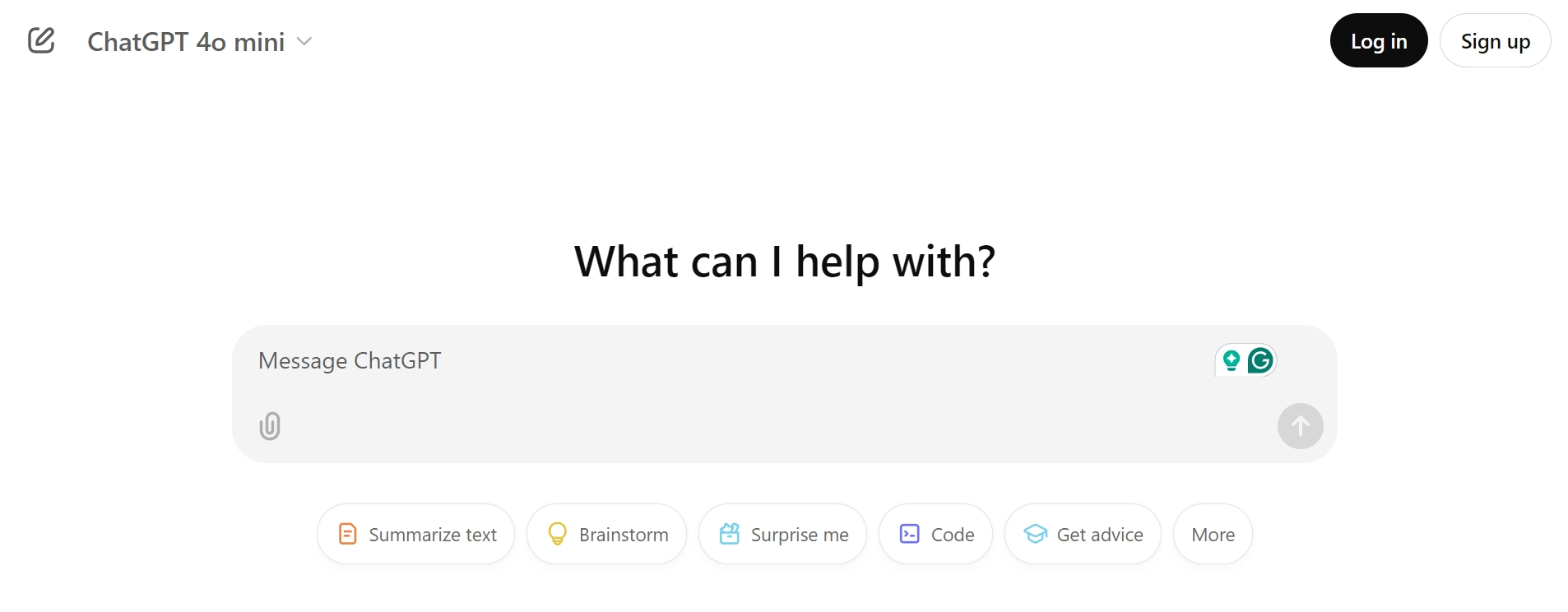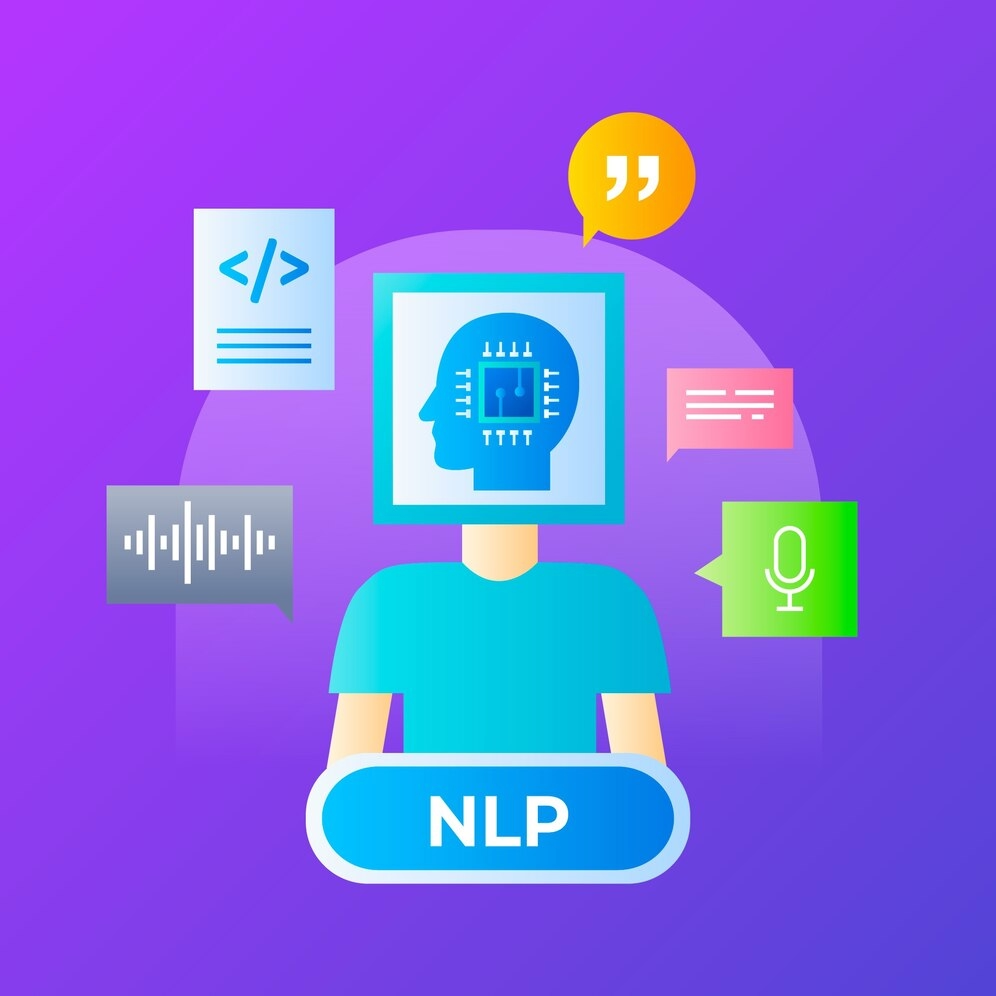ChatGPT has over 200 million users, yet most users don’t understand how ChatGPT works.
At its core, ChatGPT relies on complex algorithms and massive datasets to understand and generate human language. These algorithms, essentially sets of rules and calculations, allow the system to analyze text, identify patterns in language, and predict the most likely words to follow in a given context.
If that sounds confusing, that’s alright because that’s what this article is for.
We'll explore the GPT architecture, natural language processing, and the AI training process so you can clearly understand ChatGPT by the end.
What Is ChatGPT?

ChatGPT is a significant leap in useful artificial intelligence and makes a real difference in dozens of industries.
1. Overview of ChatGPT
The OpenAI ChatGPT framework is a conversational AI model designed to engage in natural-sounding conversations with users. This means it can answer your questions, and create different kinds of creative text formats, like poems, code, scripts, musical pieces, email, letters, etc.
Its ability to understand context and generate relevant responses makes it a versatile tool for a wide range of tasks.
2. Evolution of GPT Models
The ChatGPT model is the result of years of research and development by OpenAI, building upon a series of increasingly powerful language models known as GPT (Generative Pre-trained Transformer).
GPT-1 (2018)
GPT-1, introduced in 2018, was trained on the BooksCorpus dataset, comprising over 7,000 unique books. This model, with 117 million parameters, established the pre-training and fine-tuning paradigm, where a model is first trained on a massive dataset and then fine-tuned for specific downstream tasks.
GPT-2 (2019)
Released in 2019, GPT-2 significantly scaled up the model size to 1.5 billion parameters and was trained on a much larger and more diverse dataset known as WebText, scraped from millions of websites. This increase in scale led to substantial improvements in text generation fluency and coherence.
GPT-3 (2020)
GPT-3, launched in 2020, represented a monumental leap forward, scaling up to a staggering 175 billion parameters. This massive increase in scale, along with training on an even larger dataset encompassing Common Crawl, WebText2, Books1, and Books2, resulted in a dramatic improvement in performance across a wide range of natural language tasks.
This GPT model started the AI hype, getting over 1 million users in just 6 days of launch. This started the “AI revolution” that we’re still experiencing today.
GPT-4 (2023)
GPT-4, released in 2023, represents the current state-of-the-art in the GPT series. Key improvements include enhanced reasoning abilities, improved factual accuracy, better control over output style and tone, and the ability to handle multimodal inputs (text and images).
The Core of ChatGPT: Natural Language Processing (NLP)
Natural Language Processing (NLP) is the key behind ChatGPT. This is what allowed computers to process words and understand “context,” and ultimately, what made ChatGPT useful for professional work.
1. What Is NLP?

ChatGPT Natural Language Processing (NLP) is a branch of artificial intelligence that enables computers to understand, interpret, and generate human language. It’s responsible for connecting human communication and computer understanding, allowing machines to derive “meaning” from text. Right now, NLP is all around us in everyday applications:
- Chatbots: Customer service bots that answer questions and provide support.
- Search Engines: Analyzing search queries to provide relevant results.
- Voice Assistants (Siri, Alexa, Google Assistant): Understanding voice commands and providing spoken responses.
- Spam Filters: Identifying unwanted emails based on language patterns.
- Machine Translation: Translating text from one language to another.
2. NLP Techniques Used by ChatGPT
ChatGPT uses key NLP techniques to generate relevant responses:
- Tokenization: Breaks down text into smaller units called "tokens" (words, phrases, or sub-word units). For example, "I love learning about NLP" becomes: "I," "love," "learning," "about," and "NLP." This helps the model analyze individual components and their relationships
- Sentiment Analysis: Determines the emotional tone (positive, negative, or neutral) of text. This helps ChatGPT understand user intent and respond appropriately (e.g., offering solutions or apologies to a frustrated user).
- Text Prediction (Language Modeling): Analyzes vast amounts of text data to learn statistical probabilities of word sequences. Given a prompt, ChatGPT predicts the most likely next word, generating a coherent sequence. This pattern recognition, while powerful, isn't true "thinking" or "logic" in the human sense.
The GPT Architecture: How Language Models like ChatGPT Work
ChatGPT's ability to generate human-like text comes from its unique architecture. This section is a deeper dive into the GPT architecture explanation and how that works and functions to generate responses.
1. Understanding Neural Networks
ChatGPT is powered by neural networks, which are computational models inspired by the human brain. Just as neurons in our brains connect and transmit signals, artificial neural networks consist of interconnected nodes (or “neurons”) organized in layers. These networks learn by processing data and adjusting the strengths of connections between nodes to improve their ability to recognize patterns and make predictions.
2. Transformer Architecture
The ChatGPT neural network structure is based on a specific type of architecture called the "transformer." Unlike previous sequence-to-sequence models that processed data sequentially, transformers can process entire input sequences simultaneously, allowing for significantly faster training.
3. Training ChatGPT with Large Datasets
ChatGPT is trained on massive amounts of text and code from the internet. This "pre-training" teaches it the basics of language. Then, "fine-tuning" on specific datasets and examples refines its responses for better conversation flow and context. This fine-tuning uses supervised learning and reinforcement learning from human feedback.
4. Tokenization and Context Understanding
ChatGPT breaks down text into tokens—individual words, parts of words, or even punctuation marks. This process, called tokenization, allows the model to process text numerically.
The magic happens when these tokens are fed into the transformer network, which uses "attention mechanisms" to weigh the importance of different words in the input. This means the model doesn't just treat each token in isolation; it considers the relationships between them.
This interconnectedness of tokens, facilitated by attention, is how ChatGPT "remembers" previous parts of a conversation. By considering the context of the entire dialogue, the model generates responses relevant to the ongoing discussion, not just the last input.
Key Features of ChatGPT’s Functionality
There are a couple of key features that turn ChatGPT from just an AI research model into an AI tool that everyone can use to make content.
1. Generating Contextually Relevant Responses
ChatGPT can generate contextually relevant responses. This allows the model to maintain a sense of continuity and generate responses that are logically connected to the preceding dialogue.
The ability to produce content while maintaining context is invaluable for organizations. Consider these applications:
- Customer Service: A chatbot can remember past customer interactions, provide personalized and efficient support, and reduce customer frustration.
- Content Creation: When generating longer pieces of content, the model can maintain thematic consistency and avoid contradictions, resulting in higher-quality output.
- Data Analysis: In interactive data analysis scenarios, the model can remember previous queries, enabling more nuanced and iterative exploration of data.
2. Multilingual Capabilities
ChatGPT's training on massive multilingual datasets allows it to understand and generate text in over 100 languages. This goes beyond simple translation, allowing the model to generate creative text formats, answer questions, and engage in conversations in different languages.
This multilingual capability offers significant advantages for reaching broader audiences:
- Global Reach: Businesses can communicate with customers in their native languages, expanding their market reach.
- SEO Optimization: Generating content in multiple languages can improve search engine visibility in different regions, driving organic traffic from diverse sources.
- Cross-Cultural Communication: Facilitating communication and understanding between individuals who speak different languages.
3. Limitations and Challenges
Despite its capabilities, ChatGPT is not without limitations:
- Factual Inaccuracies (Hallucinations): The model is trained to generate plausible text, not necessarily factually accurate text. This can lead to "hallucinations," where the model generates incorrect or fabricated information that sounds convincing.
- Bias Amplification: If the training data contains biases, the model may amplify them in its outputs. This is a significant concern that OpenAI is actively addressing.
Users have adapted to these challenges in several ways:
- Fact-Checking: Users often verify information generated by ChatGPT, especially for critical applications.
- Prompt Engineering: Carefully crafted prompts can guide the model toward more accurate and relevant responses.
- Iterative Refinement: Users often refine the model's output through multiple prompts and feedback loops.
Real-World Applications of ChatGPT
ChatGPT's versatility has led to its rapid adoption across various sectors, transforming how businesses operate and individuals interact with technology. This section explores some key real-world applications.
1. Content Creation

ChatGPT is used everywhere in the content creation space, working beyond simple text generation to influence content strategy and workflows. Here's a breakdown by niche:
- Blogging and Article Writing: ChatGPT helps writers by generating drafts, overcoming writer's block, and providing new perspectives. It also aids in keyword research, content outlining, and repurposing content.
- Social Media Management: ChatGPT creates social media content, adapts it for different platforms, and analyzes social conversations using AI-powered listening tools.
- Email Marketing and Personalization: ChatGPT generates personalized email sequences, subject lines, and product descriptions, improving open and click-through rates.
2. Customer Support

ChatGPT is revolutionizing customer support by enabling businesses to provide instant and personalized assistance at scale. AI-powered chatbots can handle a large volume of customer inquiries simultaneously, reducing wait times and improving customer satisfaction. These chatbots can:
- Answer Frequently Asked Questions: Providing quick and consistent answers to common customer queries.
- Troubleshoot Basic Issues: Guiding customers through simple troubleshooting steps, resolving issues without human intervention.
- Escalate Complex Issues: Identifying complex issues that require human intervention and seamlessly transferring the conversation to a human agent, along with the full conversation history.
This integration of AI into customer service workflows allows human agents to focus on more complex and demanding cases, improving overall efficiency and customer experience.
3. Education and Learning

ChatGPT is a powerful tool in education, offering personalized learning experiences and supporting both students and educators.
- Personalized Tutoring: ChatGPT can provide personalized explanations of complex concepts, adapting its teaching style to the individual student's needs.
- Generating Practice Questions and Quizzes: Educators can use ChatGPT to create practice materials and assessments.
- Research Assistance: Students can use ChatGPT to explore different perspectives on a topic, gather information, and even generate outlines for research papers.
However, it's crucial to emphasize that ChatGPT should be used as a tool to enhance learning, not replace critical engagement with the material.
4. Accessibility Enhancements
While ChatGPT itself isn’t an accessibility tool, the GPT model is used as the primary AI model for other AI accessibility tools. That’s how “ChatGPT-powered” AI tools work, and here are some examples:
- Improved Text-to-Speech and Speech-to-Text: Transkriptor platform uses AI to provide highly accurate transcriptions of meetings and conversations to make reviewing easy, especially for the hearing handicapped.
- AI-Powered Communication Assistance: While still under development, projects like Google's Project Relate (which uses a similar ChatGPT machine learning model) aim to help users with speech impairments.
- Enhanced Captioning and Translation: Video conferencing platforms like Zoom and Microsoft Teams are integrating AI-powered captioning and translation features to provide more accurate, real-time captions.
How Eskritor Simplifies ChatGPT for Users
ChatGPT is a general-purpose AI. If you’re writing content, specialized tools like Eskritor are a more focused and user-friendly experience.
Here’s how Eskritor simplifies ChatGPT for users in three key ways:
Easy-to-Use Interfaces
Instead of complex prompts, Eskritor offers simple interfaces. Users just enter a topic, and Eskritor handles the technical details, making it accessible to everyone.
Predefined Templates
Eskritor offers templates for different writing tasks like essays, blog posts, and marketing copy. These templates provide a structure, helping the AI generate organized and relevant content without users needing to figure out complex prompting.
Built-in Editing Tools
Eskritor includes tools to refine the generated text:
- Grammar and spell checkers
- Rewriting tools for clarity and originality
- Readability analysis for better comprehension
Eskritor bridges the gap between complex AI and everyday users. By offering simple interfaces, templates, and editing tools, it makes ChatGPT accessible and useful for a wider audience.
Conclusion: Unlocking the Potential of ChatGPT
Now that you understand how ChatGPT works, you’ll write better prompts and be wary of when ChatGPT starts hallucinating. But, if there’s one takeaway from this article, it’s that ChatGPT is a general tool.
That’s why specialized AI tools are so popular. For example, Eskritor is built specifically for writing content. It’s easier to use than ChatGPT and already has built-in editing and writing prompts to make content writing that much easier. Because Eskritor is already focusing ChatGPT for you in the background, you don’t have to worry about generic writing or reminding ChatGPT to stop hallucinating.
Explore Eskritor now and see how it can help your research, writing, and brainstorming process.






 Dubai, UAE
Dubai, UAE